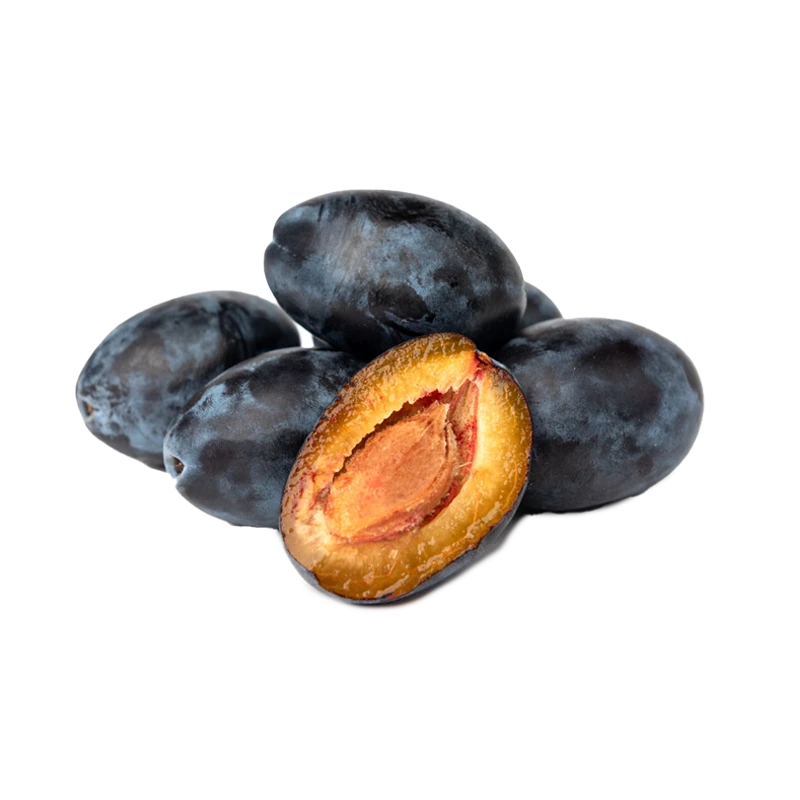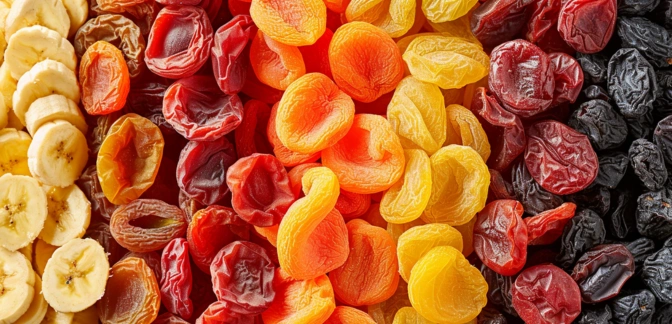Prunes — Nutrients, Health Benefits, And Shopping Tips

Written by Listonic Team
Last update on September 6, 2024
Prunes nutrients
Nutrition facts
Amount per 100 g
Calories
🔥 240 kcal
| Nutrition per: 100 g | Value | % Daily Value* |
|---|---|---|
| Carbs | 64 g | 23.27% |
| Fiber | 7 g | 25% |
| Sugars | 38 g | 76% |
| Glycemic Index | 29 | - |
| Protein | 2 g | 4% |
| Sodium | 2 mg | 0.09% |
| Total Fat | 0 g | - |
*The % of Daily Value (DV) tells you how much a nutrient in a serving of food contributes to a daily diet. 2,000 calories a day is used for general nutrition advice.
7 g
🥔 Good Fiber Content
29
🟢 Low Glycemic Index
Prunes facts & tips
Health benefits
- Rich in fiber, promoting digestive health, regular bowel movements, and can help relieve constipation.
- High in antioxidants such as phenolic compounds, which help protect the body from free radicals and reduce inflammation.
- Contains essential vitamins and minerals such as Vitamin K, Vitamin A, potassium, and iron, which support overall health and well-being.
- Supports bone health by helping to maintain bone density and reduce the risk of osteoporosis.
Health risks
- High sugar content even though it is natural sugar, it can cause blood sugar spikes, particularly concerning for diabetics.
- Potential for digestive discomfort such as bloating, gas, or diarrhea when consumed in large quantities due to their high fiber and sorbitol content.
- High calorie content which can contribute to weight gain if consumed frequently or in large portions.
- Risk of allergic reactions in some individuals, particularly those allergic to plums, causing symptoms like itching, swelling, or difficulty breathing.
How to choose prunes
Prunes should be plump and chewy with a deep purple color, indicating they are moist and flavorful. The texture should be soft, making them easy to bite into.
Avoid prunes that are hard or have a white film on the surface, as this can indicate they are old or have been exposed to excessive air. Prunes that smell sour or are overly dry should also be avoided, as they will not provide the best eating experience.

How to store prunes
Prunes should be stored in an airtight container in a cool, dry place. Keeping them in the pantry helps maintain their texture and sweetness. Properly stored, prunes can last for several months.
Exposure to air and moisture can cause prunes to spoil and lose their flavor. Avoid storing them near heat sources or in humid environments. Always ensure the container is tightly sealed to keep them fresh and prevent drying out.
✅ Extra Tip
How long do they last?
Prunes can last for 6-12 months when stored in an airtight container in a cool, dark place. For longer storage, prunes can be refrigerated or frozen, where they can last up to 1-2 years.
What to do with leftovers?
Leftover prunes can be used in a variety of sweet and savory dishes. Chop them and add to salads, yogurt, or oatmeal for added sweetness and texture, or mix them into baked goods like cakes, muffins, or bread. Prunes are also great when used as a filling for pastries, tarts, or crêpes.
Use prunes in a stew or tagine with meats like lamb or chicken, where their sweetness balances the savory flavors. If you have a lot of prunes, consider making a batch of prune preserves or using them in a compote with spices like cinnamon and cloves. Prunes can also be blended into a sauce or glaze for meats or vegetables, or used as a filling for stuffed chicken breasts or pork tenderloin. For a quick snack, enjoy prunes on their own, or mix them into a trail mix with nuts and chocolate.
👨⚕️️ Medical disclaimer
Discover products from other categories
Listonic Team
Fact-checked
Our editorial team checked this article to make sure it was accurate at the time of publishing it.
Get the top-rated shopping list app on your phone!







